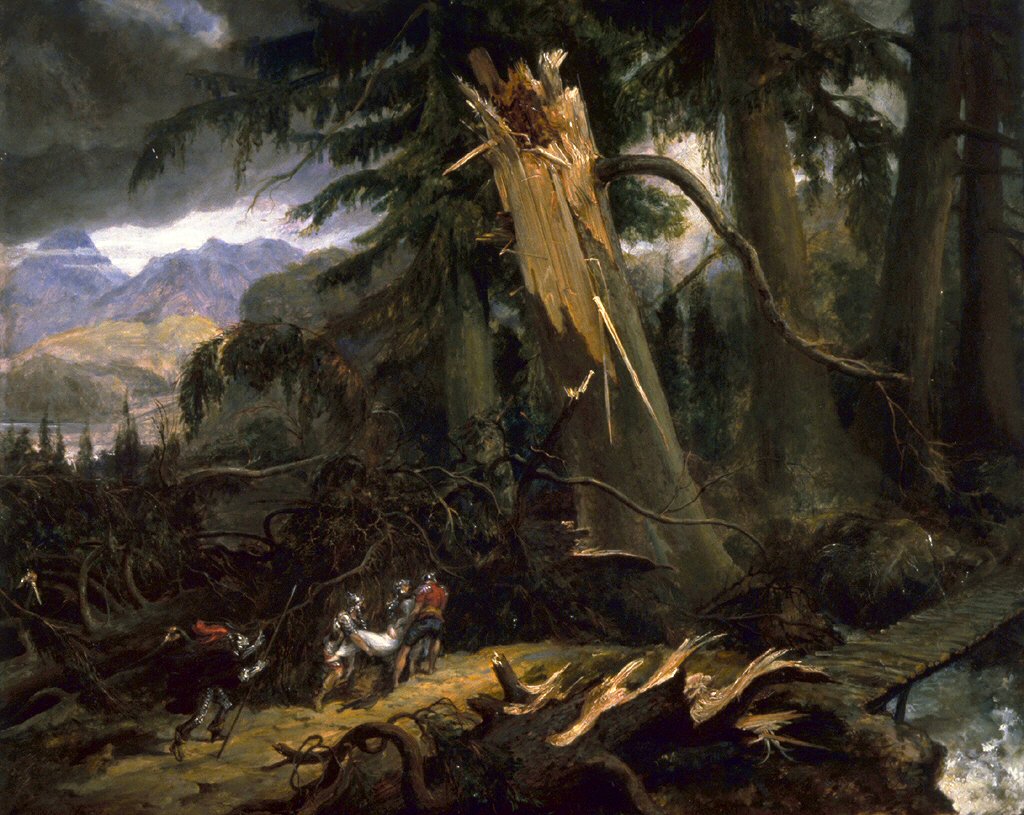After the Storm
(18th and 19th Centuries )
In 1808, Hayter enrolled in the Schools of the Royal Academy, where he was declared a new prodigy. He continued his studies on the continent, residing at various times in Paris, Florence, and Rome, supporting himself by painting portraits of the visiting aristocracy. Subsequently, he turned to romantic subjects, producing in 1826 a now lost work entitled "Banditti of Kurdistan Carrying off Circassian Women" to which this painting may be related. He returned to London in 1831 and was eventually appointed "Principal Painter-in-Ordinary" to Queen Victoria.
This work exemplifies the artist's response to Romanticism. The foreboding landscape with the blasted tree trunk reflects a tradition stemming from Neapolitan Salvator Rosa (1615-73), one of the most widely admired baroque masters in 19th-century Britain.
Provenance
Provenance (from the French provenir, 'to come from/forth') is the chronology of the ownership, custody, or location of a historical object.
Peter Davis Collection Sale, Christie's, London, November 26, 1948, lot 144; Fund for Fine Arts (Edward T. Wilson, President),Chevy Chase, Maryland; Walters Art Museum, 1993, by purchase.
Measurements
17 15/16 x 22 3/16 in. (45.6 x 56.4 cm)
Credit Line
Museum purchase with funds provided by The Fund for Fine Arts, 1993
Location in Museum
Not on view
Accession Number
In libraries, galleries, museums, and archives, an accession number is a unique identifier assigned to each object in the collection.
In libraries, galleries, museums, and archives, an accession number is a unique identifier assigned to each object in the collection.
37.2661


